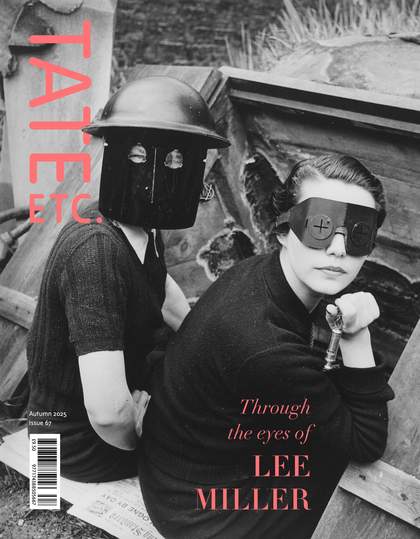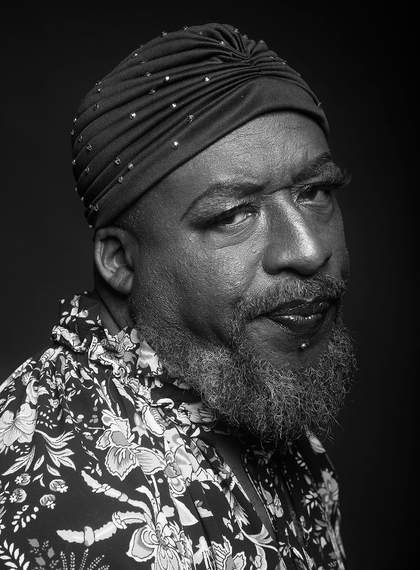
© Monster Chetwynd, courtesy of Sadie Coles HQ, London. Photo: Mathis Altmann
My 96-year-old mother has recently moved into our house. I’d forgotten about her unbearable waste-not-want-not tendencies. (She grew up on rationing.) For instance, she shouts at me when I try to bin tea bags that have been used only once. Can you recommend any creative ways to satisfy her need to hoard, while keeping our relationship sweet?
This is a really difficult situation to contribute to as it speaks not only to the Second World War generation, who are exemplary in their resourcefulness, but also to the King Lear aspect of an older parent losing their authority. I imagine that rationing this authority could be an answer. For example, on one day a week the 96-year-old’s wishes are respected, listened to and followed. Or, if not in time, then in space: an area of the kingdom can remain in their command. I also find pets help, as they can be fussed over by the dethroned older parent as if they are minions. But also, why not embrace the tea bag’s double use? I have a compost worm box; old tea bags go into this. I use a tea pot, too. One important bonding or bridge-building routine I have experience of is a film club in which the aged parent is allowed to choose a film once a week, which we watch together so they feel listened to. (We have seen many Danny Kaye films all together.) It defuses the other types of arguments as well, as you all look forward to the film night together.
My partner has just started trialling a new look, and I find it a bit of a turn-off. But I also don’t want to get in the way of their self-expression... What do I do?
I recommend listening to What Ho! Jeeves, the series of radio dramas adapted from P.G. Wodehouse’s Jeeves and Wooster novels, starring Michael Hordern and Richard Briers. In the series, Jeeves goes to elaborate efforts to curtail his young master’s dress sense when it veers off track. It’s cheering to know that Wooster always comes round eventually, handing over the loud jacket, hat or spats in ready thanks to Jeeves at the end of each protracted adventure.
Whenever I take my six-year-old to an art museum, she spends the whole time racing around, not paying much attention to the art. But recently, I took her to a show and she was transfixed, to the point where she got too close to a painting and set off an alarm. She was scared, and it seems to have put her off wanting to go again. Can you suggest any ways of explaining to her the need for barriers around artwork, while also maintaining her interest?
I would make a cake with your six-year-old and spend time decorating it, then expose the cake to peril – potentially a party of four-year-olds or a tube journey in rush hour – and see if she can design a way to protect the cake.
There is a slob in my shared studio. I know I shouldn’t care – and they originally invited me to the studio – but I find their mess really distracting. The space is great otherwise. Can I have a word or should I go elsewhere?
What hours do you work? Maybe try adjusting your timetable so you have different contact hours. Also, I once read in a British Airways in-flight magazine (I used to find these irresistibly interesting as they included estimated reading times beside articles) some tips for how to get on with unbearable work colleagues. Apparently, you examine them and find one of their good aspects, then tell it to them as a compliment and watch it work. Soon, apparently, the person will start behaving differently and you will also start to see them differently, and the relationship will develop on a good track.
Just before the opening of my recent Master’s graduate show, an artist was invited to walk around and provide a crit to each of the students. I got some feedback that made me question something I view as an intrinsic part of who I am and what I make. I feel like the artist completely missed the point of what I was trying to say. On the other hand, they’re very respected and I really like their work. How should I handle this?
I can see how this could be puzzling. I would organise a crit with your peers or other people with whom you can talk through all the ins and outs of your work. Make sure the people you are with are not intimidating, but people who you can really engage with. I can recommend listening to the BBC Radio 4 episode of In Our Time on Italo Calvino, as it succinctly explains the postmodern concept of the audience/reader being the author of the work. This, in itself, should open you up to the idea of your work being misinterpreted and potentially reinvented by other people. I am well aware that you can’t please everyone, and potentially your work will not be understood by some people in the way you intend it to be. There is a crit formula, in which the group talks about the work before the artist can contribute themselves, and this trains you to see if the work ‘speaks for itself ’. I think I can say bon courage – just keep going and don’t let the odd moment of confusion get you down.
After a tough few months, I am feeling emotionally numb. Can you recommend any art – be it musical, visual or literary – that might break through?
I watch Andrei Tarkovsky’s film Andrei Rublev (1966) when I feel disillusioned as an artist. It is the subplot of the boy making the bell that is the turning point. Often, we must go through hard times to work out what really matters to us to then be able to pick up and once again feel motivation and conviction. I am currently reading Gerald Durrell’s Corfu trilogy and am finding this very life enhancing. (Also, the 1970s Muppet films always seem to lift my spirits.)
Send your problems to tate.etc@tate.org.uk for your chance to be featured in the next issue.
Monster Chetwynd’s A Tax Haven Run By Women 2010–11 was purchased in 2017 and is currently on display in Performer and Participant at ºÚÁÏÉç.




